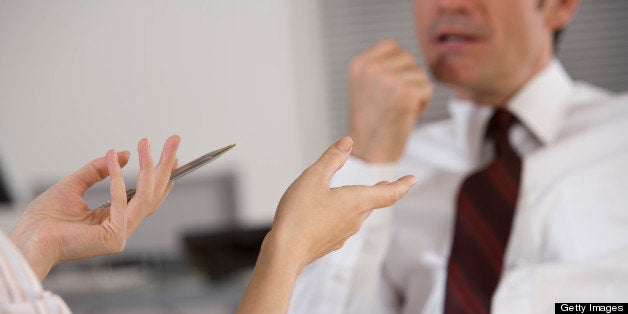
Politicians need to know how to expertly speak in two languages -- verbal language and body language. For aspiring politicians, knowing how to engage and reach the masses with their ideas and beliefs is essential. But knowing what to say is just as important as how to say it.
Nonverbal communication -- facial expressions, voice tone and body language is important for all aspects of an aspiring politicians career especially public speaking, networking, media appearances and fundraising. When I consult with leaders, aspiring politicians and businessmen and women I make sure that they are thinking, practicing and articulating correct body language along with their statements.
Here is an overview of some great body language tips for aspiring politicians:
Body Language Tips for Media Appearances:
You have about 30 seconds to make an impression. And in the media, you are lucky to get 30 seconds of air talk time. People's first impressions are highly accurate. Research has found that people's first impressions are not only correct, but also based more on nonverbal behavior than we think. In one study, researchers had subjects watch a 30-second clip of college professors teaching and asked them to rate the teachers on positive and negative personality traits. Using only the 30-second clip, raters were able to accurately predict how students in a semester long class with the teacher would evaluate them. In other words, in 30 seconds people can figure out how successful that person will be.
Interestingly, the participants evaluations where just as accurate when they watched the videos on mute. Relying solely on body language -- the raters could still guess how the teachers would do in their class. This shows us how important it is to make a strong impression right away -- and to do it with body language.
Open Palm Gestures: Our brains pay far more attention to hands than most people realize. From an evolutionary standpoint, this makes complete sense -- if we want to know if someone is safe, we look to see if they are holding a weapon. Therefore, subconsciously it makes us nervous when we can't see someone's hands. If you have the ability in a media appearance to keep your hands visible, it will instantly help with likeability and trust for viewers. You can do this by folding your hands on top of the interview desk or sitting back far enough to make sure your hands and lap are in frame.
Avoid Contempt: When people are nervous they often try to cover it with a smile. This is not a bad thing -- as smiling does help build rapport, however make sure you give a full mouth smile, not a smirk. A one-sided mouth raise or smirk is the universal microexpression for contempt, hatred or disdain. (Full guide to microexpressions here) Smiling is an important connection building behavior, but too much smiling is a sign of submission. Subconsciously we tend to believe that the more important someone is the less they need to smile. So, be sure to give a full smile at the start and end of the interview, but do not overdue it so you don't look inauthentic or submissive.
Body Language Tips for Public Speaking:
A politician's nonverbal behavior during debates or speeches is a major contributing factor to the audience's lasting impression. According to University of Pittsburgh Political Communications Professor Jerry Shuster, body language, mannerisms and facial expressions are 85 percent of what an audience takes away.
In addition, speakers need to know how the average brain works. When the brain gets tired of listening (no matter how interesting you are, your audience can only keep constant attention for so long) it rests and misses points. To fill in these gaps, our brain tries grab at something easier to understand -- this is usually a candidate's body language. Also, when viewers do not understand a verbal point, their brain looks for an answer in the nonverbal behavior. Since politics often has some very complex tax and health issues there is always going to be a large part of the population that, unfortunately, does not quite understand the numbers and arguments the candidates are using. In this way, they are going to focus even more on what they see, not what they hear. This is why body language in politics is so important. Here are a few tricks to help your nonverbal communication be more positive:
Head Up, Chin Up: A mistake I see politicians make all the time is they look down at their notes either in between points of a debate or when they are nervous. When you look down, you also bow your head, which is a sign of submission. Submissiveness is the last thing a candidate wants to portray. So to look strong and optimistic always keep your head and chin up which is a powerful nonverbal position.
Small Waves: An old school tip that many politicians are taught is to make small waves or acknowledgement gestures to the crowd as they approach their podium. Obama often does this as he walks out onto stage. This is a powerful move because it is a subtle way of showing social proof and popularity. It shows that the speaker has supporters in the audience, is friendly and relatable.
